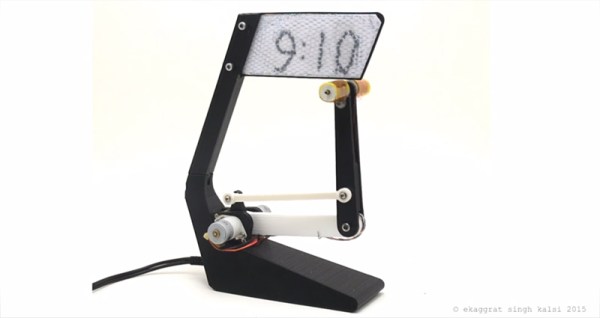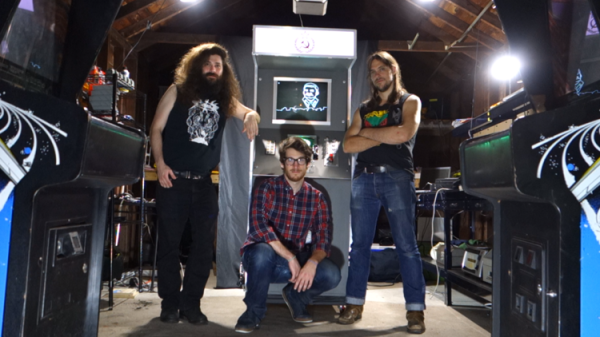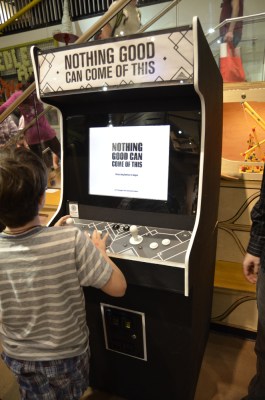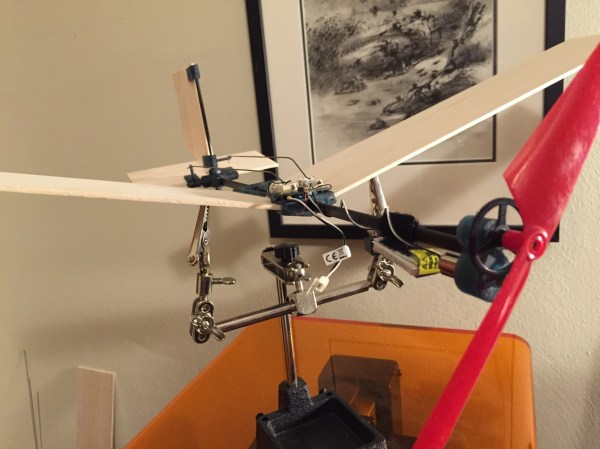We’ve seen quite a few clocks that write the time out with a pen or marker. If you think about it, this really isn’t a great solution; every whiteboard marker will dry out in a day or two, and even if you’re using a pen, that’s still eventually going to run out of ink.
[ekaggrat] wanted a drawing clock that didn’t have these problems, and after taking a look at a magnetic drawing board, was struck with inspiration. The result is a clock that will perpetually write the time. It’s a revision of one of his earlier builds and looks to be much more reliable and mechanically precise.
A clock that writes time needs some sort of surface that won’t degrade, but can be written to over and over again. Whiteboards and glass won’t work, and neither will anything with ink. The solution to this problem was found in a ‘magnetic writing board’ or a Magna Doodle. These magnetic writing boards have a series of cells encapsulating iron filings. Pass a magnet over one side of the board, and a dot of filings appear. Pass a magnet over the opposite side of the board, and the filings disappear.
[ekaggrat]’s time-writing robot consists of a small Magna Doodle display, a robotic arm controlled by two stepper motors, and two solenoids on the end of the arm. The kinematics come from a helpful chap on the RepRap forums, and with the ATmega644 and two stepper drivers, this clock can write the time by altering the current flowing through two solenoids.
A video is the best way to experience this project, and you can check that out below.
Continue reading “Robot Clock Writes Time Over And Over And Over”






 Video arcades may be a thing of the past, but they’re still alive, well and were ready to play at this year’s World Maker Faire. The offerings weren’t old favorites, all were brand new games many being shown for the first time like the long-awaited VEC9. The Hall of Science building was filled with cabinets and no quarters were necessary, all were free-play.
Video arcades may be a thing of the past, but they’re still alive, well and were ready to play at this year’s World Maker Faire. The offerings weren’t old favorites, all were brand new games many being shown for the first time like the long-awaited VEC9. The Hall of Science building was filled with cabinets and no quarters were necessary, all were free-play.









